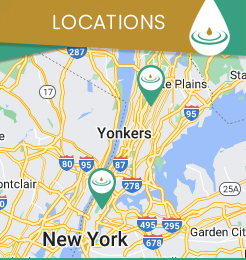Hyperhidrosis Botox Treatment in Scarsdale and New York, NY
Hyperhidrosis, or excessive sweating, can significantly impact an individual’s quality of life, causing physical discomfort and emotional distress. While there are various treatment options available, one of the most effective and commonly used methods is the use of Botox injections. Botox, a neurotoxin derived from the bacterium Clostridium botulinum, has been proven to be an effective treatment for hyperhidrosis. Eugene J. Liu, M.D. provides hyperhidrosis botox treatment to decrease excessive sweating by inhibiting the nerve signal that causes sweat glands to contract. If you’re considering getting botox to cure excessive sweating in your underarms, palms, and feet, contact us or schedule an appointment online. We have convenient locations to serve you in Scarsdale and New York, NY.






Additional Services You May Need
▸ Dermal Fillers
▸ Microneedling
▸ Biostimulants
▸ Coolsculpting Elite
▸ Ultherapy
▸ Dysport
▸ Xeomin
▸ Botox
▸ Botox Lip Flip
▸ Cheek Fillers
▸ Hyperhidrosis Botox
▸ Juvederm Dermal Filler
▸ Lip Fillers
▸ IV Therapy and Weight Loss Solutions
▸ Jeuveau
▸ Hyperdilute – Sculptra
▸ Diode Laser
▸ Body Sculpting
▸ Semaglutide GLP-1
▸ SkinPen Microneedling
▸ LED Light Therapy
▸ High Frequency Facials
▸ B12 Injections
▸ Chemical Peels
▸ Skincare Regimen
▸ Restylane Injectable Filler
▸ Sculptra
▸ Radiesse
▸ Facials
▸ Morpheus8
▸ Forma
▸ Laser Hair Removal
▸ Lumecca/ IPL/ Photofacial
▸ Cosmetic Lasers
▸ Hydrafacial
▸ VI Peels
▸ PDO Threads
▸ Dermaplaning
▸ Sclerotherapy
▸ Revanesse
▸ Belotero
▸ Hyperdilute – Radiesse
▸ Laser Vein Treatment
▸ Lipo Dissolve
▸ Skin Tightening
▸ AquaGold Microneedling
▸ Exo-Xomes
▸ Lymphatic Drainage
▸ Acne Injections
▸ NAD+ Injections
▸ IV Therapy








